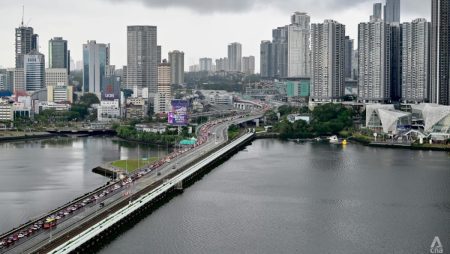ives substantial investment from Beijing under its Belt and Road Initiative. The 190-kilometer canal is intended to boost economic development, trade, and tourism in the country by providing a direct route to the sea for ships traveling to and from Phnom Penh. However, the project has faced criticism from environmentalists who warn of potential ecological damage, as well as concerns about displacement of local communities and the impact on Cambodia’s sovereignty.
Despite these concerns, Prime Minister Hun Manet has emphasized the benefits of the project, stating that it will create jobs, stimulate economic growth, and improve connectivity within the region. He also highlighted the potential for the canal to attract foreign investment and increase opportunities for Cambodian businesses. The government views the project as a key part of its efforts to modernize and develop the country’s infrastructure, with support from Chinese investors who see Cambodia as a strategic partner in their regional development plans.
Critics of the canal project argue that it may not deliver the economic benefits promised by the government, and could instead lead to corruption, environmental degradation, and social unrest. They point to previous Chinese-backed projects in Cambodia, such as the controversial Sihanoukville Special Economic Zone, which have faced criticism for their negative impacts on local communities and the environment. There are also concerns that the canal could become a white elephant, costing the government more than expected and failing to deliver on its economic promises.
The construction of the Funan Techo canal is expected to begin in 2020 and take approximately five years to complete. The government has stated that it will work with Chinese investors to oversee the project and ensure that it meets international standards for environmental protection and social responsibility. However, critics remain skeptical of the government’s ability to effectively manage such a large-scale infrastructure project and ensure that it benefits all Cambodians, rather than just a select few.
As Cambodia moves forward with its plans to build the Funan Techo canal, the government will need to address the concerns of critics and ensure transparency and accountability throughout the project’s development. This will be crucial in order to mitigate potential risks and ensure that the canal delivers on its promises of economic development and increased connectivity for the country. With the support of Chinese investors, Cambodia’s infrastructure ambitions may become a reality, but only time will tell whether the canal will bring the benefits that the government envisions.
In conclusion, the construction of the Funan Techo canal represents a significant infrastructure project for Cambodia, with the potential to provide economic benefits and improve connectivity within the region. However, the project also faces challenges in terms of environmental impact, displacement of local communities, and concerns about government transparency and accountability. As Cambodia moves forward with the canal’s development, it will be important for the government to address these issues and ensure that the project is managed effectively to deliver on its promises. With the support of Chinese investors, the canal could become a key asset for Cambodia’s economic development, but only if it is implemented responsibly and with consideration for the country’s long-term sustainability.















